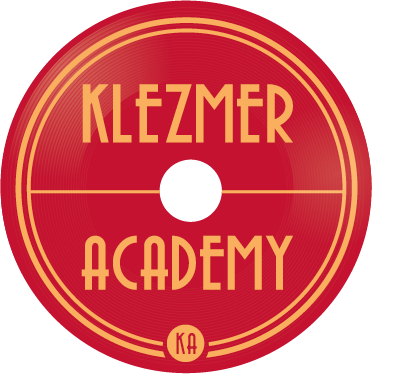Usually, when one sees a listing for a Syrena Grand recording of a Romanian orchestra, the thrill of discovering a new Belf disc is shimmering as a possibility. In fact, when I saw the dealer listing for the recording I am about to introduce, he had mistakenly listed it as being by a Romanian orchestra under the direction of V. Belf. The bad news is that it is, in fact, NOT a Belf recording. In fact, if anything, it sounds a lot like the orchestra conducted by P. Grancowa that we met yesterday: the same brass-centered sound with woodwind accents and meticulous arrangements. The good news, however, is that it is very interesting in its own right.
The first characteristic of interest is that the titles of the performances on the disc are given as “Frejlechs” parts I and II. There are frequent examples of two-part recordings among the klezmer corpus, but most consist of a doina or hora followed by a livelier tune. There are also two-part wedding scenes that consist of various shtiklekh of tunes. This is the only example I have found of a two-part freylekh. However, the two parts of this recording seem to bear no obvious relation to each other, except that they are both in the same mode and both melodies are note-intensive.
Frejlechs part I is, in part, a mish-mosh of sections familiar from other tunes. The A section is a variant of the final section of Abe Schwartz’s 1928 recording, Unzer toirele. It is interesting that what is an introductory theme in the Syrena performance is the concluding theme in the Schwartz.
The B section is a faux shout chorus that alternates between Aminor and G major; it is identical to the faux shout that comprises the first half of the B section of Kandel’s Flaskadriga (a tune discussed in an earlier blog post). The C section follows a familiar harmonic cadence: G-C-E-Am-E-Am-Dm-E and is played with precision.
Frejlechs part II is a version of the A and B sections of Abe Schwartz’s 1920 Columbia recording A nigun nuch’n seider.
Schwartz’s tune goes on to a third section, while the earlier recording has only two.
The Schwartz version of the tune, while not as exotic as a European recording from a decade earlier, is fascinating because we actually have two recorded versions of it. The one I have just shared, from my collection, is a fairly square and straightforward rhythmically. However, I was first introduced to this tune many decades ago at KlezKamp, where Kurt Bjorling and I were sharing audio resources, and he gave me a version with the same discographic data that was as far from square and straightforward as it could be. While clearly the same ensemble, Kurt’s version has a lot of what I call temporal dissonance in the A and B sections: some of the members of the ensemble, most notably the clarinet, plays so far ahead of the beat as to leave a lot of space between the end of the melodic phrase and the downbeat of the next. We have never been able to figure out whether this was a different take recorded on a different day or even a slightly different group, since the information etched into the disc seems identical. This remains one of the pervasive mysteries of the early klezmer world.
Tomorrow, I will be introducing a second recording by P. Grancowa’s orchestra.
Khag sameaKh.
**Chanukah art from screen shots of the Menorah iPad app by RustyBrick, Inc.







